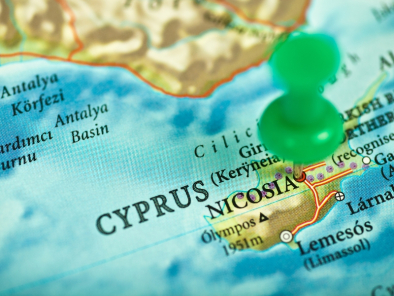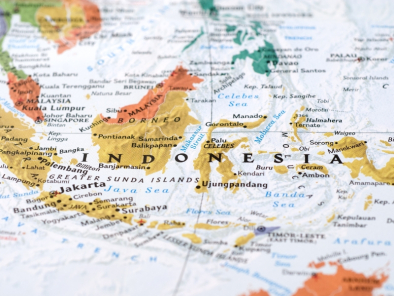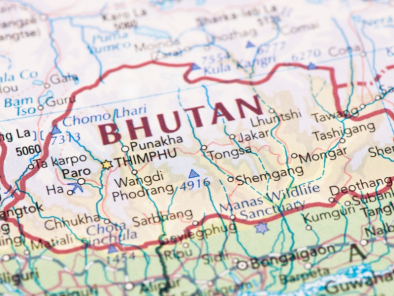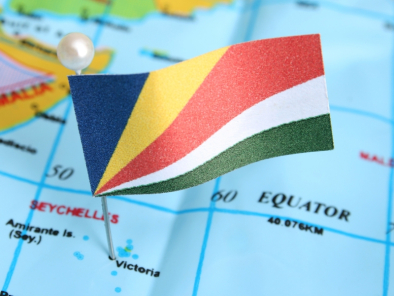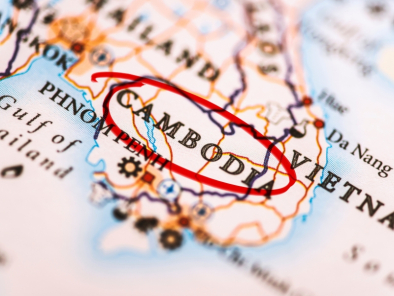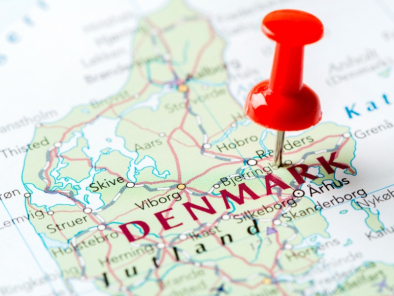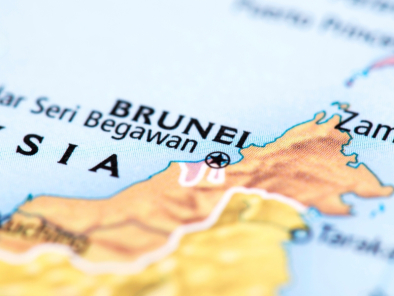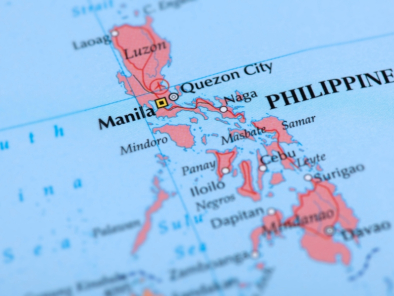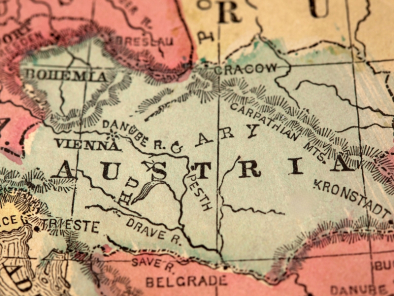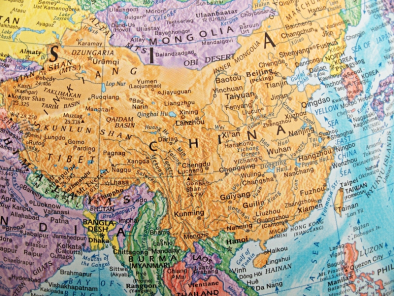CYPRUS
Cyprus, an island of legends that basks year-round
in the light of the warm Mediterranean sun. A storied past 10,000 years long
has seen civilizations come and go and the likes of everyone from Alexander the
Great to Cleopatra stake their claim here - but then, people do tend to get
possessive when faced with such beauty.
Aphrodite made her home on Cyprus,
and travellers throughout antiquity came here just to pay her tribute.
Today Cyprus
is a modern country that effortlessly marries European culture with
ancient enchantment. Here you will discover a compact
world of alluring beaches and fragrant mountain peaks, vineyards studded
with olive trees and ancient ruins that stir the imagination, citrus groves and
old stone villages where sweet wine flows as freely as conversations at the
local café. A carefree
place where a sense of timelessness is magnified by the kindness of the
people.
Accept
the island's invitation, and you will find some 10,000 years of history to explore,
Roman ruins with sea views, Byzantine churches tucked away in mountain valleys,
sturdy Crusader castles, and villages where wine- and lace-making traditions
still thrive. There is also no shortage of sun and sand, making Cyprus
a hotspot for water sports enthusiasts and sun-seekers.
The island's vegetation is typically Mediterranean: this is a land of olive
groves and citrus orchards, bright pink bougainvillea and spiny shrub thickets.
In the Troodos Mountains, pine and cedar line the
slopes, which often receive snow from late December through early April.
Humans are not the only travellers welcomed by the island: it lies on the
north-south bird migration routes, bringing new colour to the island's resident
bird populations in the form of some 150 million birds en route to their summer
or winter homes (peak migration is usually March). February, March and April
are the best months for the island's show of spring wildflowers such as
anemones, tulips and orchids, with several species found only on Cyprus.
Thousands of tourists each year now come to sample the island's charms, putting
it among Europe's favourite holiday
destinations. Many come to enjoy the vibrant nightlife and young scene of Aiya
Napa, but an increasing number are pleasantly surprised by the wealth of other
attractions on offer here.
VISA: The visa is to be obtained prior to arrival in the country.
CLIMATE:
Cyprus
enjoys an intense Mediterranean climate, with long dry summers from mid-May to
mid-October and with mild winters from December to February, which are
separated by short autumn and spring seasons. Summer is a season of high
temperatures with cloudless skies, but the sea breeze creates a pleasant
atmosphere in the coastal areas. Winters are mild with some rain and snow on Troodos Mountains (usually starting before
Christmas). In Cyprus
there is abundant sunshine as indicated in the tables above. Even in December
and January, there is an average of six hours of bright sunshine per day
TIME:
Cyprus is
3 hrs 30 mins behind the Indian Standard Time.
ELECTRICITY:
The
supply in Cyprus
is 240 volts, a.c. 50Hz. Sockets are usually 13 amp, square-pin in most
buildings. Adaptors can be purchased from electricians, supermarkets, grocery
shops etc.
CLOTHES:
April
– May: Medium-weight and summer apparel: Light woollies or long sleeved cotton
for the evenings.
June–July–August:
Very light weight summer clothing. Ideal for swimming and all beach/water
activities
September
– October: Lightweight apparel for the day and medium-weight for the evenings
in October. Swimming and water-sports are still at their best.
December
– January – February: Winter clothing; not heavy coats though!
March:
Winter apparel with medium-weight wear.
CURRENCY:
The
currency of the Republic is the Cyprus
pound - CY£, which is divided into 100 cents.Notes and coins currently in
circulation are as follows:
Banknotes: CY£20, CY£10, CY£5, CY£1.
Coins: 1 cent, 2 cents, 5 cents, 10 cents, 20 cents, 50 cents.
GETTING THERE:
Travellers
arriving in the Republic
of Cyprus may enter the
Republic only through the legal ports of entry: Larnaka and Pafos
International Airports, or the ports of Larnaka, Lemesos (Limassol), and
Pafos.
By
Air: There is no direct flight from India
but there are daily flight connections from cities Dubai
(
Emirates) and other Gulf countries (
Gulf Air) as well as some European countries.
GETTING AROUND:
By Air: Domestic air
travel is convenient between main cities and it's possible to pick up heavily
discounted fares on specified flights.
By Bus : Various Bus
companies link all major towns with daily routes at specified interval. Local
buses operate frequently during daytime and in certain tourist areas, during
summer, their timetables are extended till midnight.
By Taxi: Transurban
taxis: This service offers the opportunity to share a taxi with 4-8 other
passengers. It provides connection between all major towns of Cyprus
(Lefkosia, Lemesos, Larnaka, Pafos), every half hour, Monday-Friday
06.00-18.00, Saturday and Sundays 06.00-17.00. Seats can be booked by phone and
passengers can be collected from and dropped to, at any place they wish, within
the municipal boundaries.
No Service offered on Public Holidays
Urban Taxis: This is a 24
hours service provided in all towns. Taxis can be booked by phone or be hired
from the street. Urban taxis are provided with taximeters.
Rural Taxis: are allowed to be hired from their base station only. An exception
is permitted, when hiring is made at the airport or seaport, where the taxi
driver must present such document proving the collection of certain customers. Taximeters
in rural taxis are not installed.
CITIES:
LEFKOSIA (NICOSIA)
The
capital of Cyprus,
in the middle of the island, is cut in two by the Green Line, which divides the
country. Since the wall came down in Berlin,
it's the only divided capital in the world. The old town, inside the
16th-century Venetian walls, is the most interesting part of Lefkosia, with the
city centre and municipal gardens just outside the wall on the south-west side.
In
Lefkosia, the Leventis Municipal Museum traces the development of the
city from prehistoric times and gives a pretty good overview - it's not a bad
place to start your Lefkosian experience. Just east of the Leventis you'll find
a museum of culture, Dragoman Hadzigeorgakis. The building - a
15th-century mansion - is gorgeous. For some spectacular museum pieces try the Byzantine Museum in the downright Archbishop's
Palace, which has a superb collection of religious icons and mosaics. In
the grounds of the museum, St
John's Cathedral has some recently restored
18th-century frescoes. Once the main entrance to the city, the Famagusta
Gate, on the eastern wall, is beautifully preserved and is now used as a
cultural centre.
The
centre of North Nicosia is Atatürk Square, in the north-west.
From the square, the main street runs north to the well-preserved Kyrenia
Gate. Near the gate you'll find the Turkish Museum,
which lives in a 17th-century monastery and features a display of
whirling-dervish memorabilia. The Selimiye Mosque, built in the 13th
century, is one of the finest examples of Gothic architecture in the country.
Famous around the world, the Büyük Hammam, in the south of town, is the
city's largest Turkish bath.
Lying
on the Mesaoria Plain, north of the Troodos Mountains, the
capital city of Nicosia
has a historic heart. Inside the
"old city's" star-shaped 16th century Venetian walls narrow streets,
walled in by one and two-storey houses of stone or plastered mud-brick, form a
veritable maze. Many of these houses are gradually being restored, with
wrought-iron wrapped balconies that hang over the streets and wooden shutters
that shield against the sun.
The pedestrian area of Laiki Yeitonia boasts bustling shops and cafés,
extending down Ledra Street to the United Nations buffer zone known as
the "Green Line", which separates the largely Greek Cypriot
southern Republic of Cyprus from the Turkish Cypriot area in the north.
The Central Archbishopric offers graceful architecture, the small but
colourful Cathedral of Agios Ioannis, or St John (Open: Mon-Fri 08h00-12h00 and
14h00-16h00; Sat 08h00-12h00 and several museums.
Just
to the west of the Venetian walls lies the Cyprus Museum,
a must-see for archaeology buffs
Open: Mon-Sat 09h00-17h00; Sun 10h00-13h00.
AYIA NAPA
Ayia
Napa is the island's foremost site for sea, sun and fun, with a well-deserved
reputation for lively nightlife. Over the last decade tourists, particularly
from the UK,
have adopted the town as their personal playground. The proliferation of bars
and clubs reached saturation point in the last few years, and recently the
locals have imposed some order on the hedonism, which means the town is a lot
less chaotic now than you might think. However, this is still very much a
lively resort town, and the beaches remain packed through summer while the
nightlife is still energetic.
The town centre's small 16th-century monastery is a rather peaceful haven if
you want to get away from it all for a while, and it reveals another side to
the town - which will still be here when the tourists eventually move on.
Beach lovers and watersports enthusiasts will find much to do in this eastern
corner of the island: Cape
Greco in particular
offers walking trails, sea caves and stunning sunsets.
LARNACA
The
whole district of Larnaca has something special to offer to the visitor,
including Choirocoitia, the oldest Neolithic settlement on the island, Stavrovouni
Monastery and the famous Church
of Angeloktisti.
Although very much a working city; the palm-lined waterfront promenade, ancient
fort and historic quarter imbue Larnaca with a distinct antique flavour. Today
the city is a relaxed place well loved for its easygoing attitude and friendly
people. Modern Larnaca is a bustling town with its own international airport,
yet it has somehow managed to retain a good deal of historic Levantine
charm. Larnaca’s main tourist attraction is the nearby mosque of Hala Sultan
Tekke, which draws pilgrims from across the Moslem world. The mosque is
located next to a salt-lake southwest of the city and both can be visited in a
day-trip. Heading out of town towards Limassol takes you into the green
foothills of the Troodos
Mountains, while to
the west the frenetic charms of Ayia Napa await. Scuba divers are in for a
treat in the shape of the Zenobia, a passenger ferry which sank in 1983
and is now rated as one of the world’s top ten wrecks.
Church
of Ayios Lazaros
On
the east coast, a pleasant, palm-lined seafront promenade greets visitors to
Larnaca's old quarter, where the main attraction is the Church of Agios
Lazaros, or Saint Lazarus (Plateia Agiou Lazarou. Open: Mon-Sun
08h00-12h30 and 15h30-18h30.
The
saint is believed to have lived in this area after being raised from the dead
by Jesus.
Just south of the city, near the island's main international airport, is Larnaca
Salt Lake. Often home to pink flamingos from December through July, on the
edge of the lake is the elegant Hala Sultan Tekke Open: daily
09h00-17h00 (winter); 07h30-19h30 (summer), a memorial mosque to Prophet
Mohammed's aunt.
Larnaca Salt Lake
For an excellent day trip from Larnaca, try
the mountain village of Lefkara (signposted off the A1, the main Nicosia-to-Limassol
motorway), which is known for lace-making (lefkaritika) and its
silversmiths
PAPHOS
Paphos is
rapidly becoming the most important tourist centre of Cyprus. It is a
small city with about 11.000 inhabitants. The old Paphos is a small village,
called Ktima. Today, there is also a modern Paphos, called Kato
Paphos, which is the tourist neighbourhood. This modern resort has several
hotels, a boulevard with different cafés and bars and a 18 hole golf course.
Paphos is a romantic city with a vibrant night-life. Close to the harbour are
several archaeological sites. In former times, Nea Paphos was the most
important city of the island, but earthquakes and invasions of the Saracens
drove most of the people to the neighbouring hamlet of Ktima. For lovers of
ancient Greece
culture, Paphos is a must.
Some
place to visit are : the Paphos District Museum (a collection of archeological
findings),
the
Georgios Eliades collection in Exo
Vrysis Street (fossils and archeological objects), the Byzantine
fortress of Saranda Kolones (the 40 columns), the House of Dionysus
(a Roman villa from the third century that was excavated in 1962 and that has
some splendid mosaics), and the House of Theseus
With
plenty of luxury beachfront resorts, Paphos (on the south-west coast and home
to one of the island's two international airports) makes an excellent base for
touring. Look beyond the beach, and you'll also discover that this town - a
UNESCO World Heritage site - embraces a wide sweep of Cyprus's history.
A
medieval fortress (Open: daily 10h00-17h00 (18h00 in summer) stands at the
harbour, where brightly painted fishing boats still moor. Nearby Roman ruins at
Paphos Archaeological Park
(Poseidonos Rd. Open: Mon-Sat 10h00-16h00) date mainly from the 2nd and 3rd
centuries, with an Odeon (theatre), its accompanying Agora (marketplace),
and the superb mosaic floors of several villas. A ten-minute drive takes you
600 years further back in time to the Tombs of the Kings (off Tafon ton
Vasileon, north of harbour area. Open: daily 08h00-17h00 (winter); 08h30-19h30
(summer).
Petra
tou Romiou
One
look at this stunning stretch of coastline 25 kilometres east of Paphos, and
it's easy to understand why, according to legend, Aphrodite chose this beach to
come ashore after her birth in the sea foam off Cyprus.
Soaring cliffs and a smooth-pebbled beach frame a turquoise bay, in which the
craggy rocks known as Petra
tou Romiou stand guard. Parking is available off the B6 coastal road, which
also offers several look-out points for admiring the views.
Approximately 15 kilometres further east, Pissouri Bay
offers a beautiful beach, well equipped with showers, sunbeds and tavernas.
Kouklia (Palaepaphos)
A
few kilometres inland from Petra tou
Romiou stands the village
of Kouklia, once
home to a centre of Aphrodite worship. It was a place of pilgrimage for many of
the devout, with the temple that once stood here being established as early as
1200BC.
Only the foundations of her majestic temple can be seen, but the archaeological
museum next to the ruins contains many interesting finds from the site, and is
itself a Lusignan manor house, parts of which date to the 13th century.
Elsewhere among the scattered ruins, you can see tombs, mosaic floors and
arches from various constructions over the centuries. A guidebook will point
you in the right direction and is worth buying to identify the various objects
uncovered by over a century of excavations.
Sanctuary of Aphrodite. 14km east of Paphos; follow signs to Kouklia off
the motorway or B6 coastal road. Open: daily 09h00-16h00.
The Akamas Peninsula
The
western tip of Cyprus
offers a coast that is still wild - where seawater collects in rock pools,
endangered sea turtles climb onto beaches to lay their eggs, and deep gorges
shelter rare plants.
Lovely sea views can be enjoyed from the two nature trails that start at the
Baths of Aphrodite, a small pool where the goddess reputedly bathed, beyond the
village of Latchi (Latsi). Latchi has
a pretty fishing harbour, and excellent watersports facilities run by local guides
and tutors.
The B7 links Paphos to Polis, with a coastal road running west from Polis to
Latchi and a car park near the baths.
The Troodos Mountains
Rising
like rumpled pillows in the centre of the island, the Troodos Mountains
guarantee cool breezes even in the strong heat of July. Villages and
monasteries cling, sometimes precariously, to the slopes among the scented
pines, and nature trails provide excellent walking.
The once-remote locations helped protect the Byzantine "painted"
churches, many of which are now UNESCO World Heritage sites: the colourful
frescoes on their walls tell the stories of the Bible. In the western reaches
of the Troodos Mountains,
the Cedar Valley features a wildlife preserve for
the moufflon, an endangered wild sheep.
LIMASSOL
This
city lies on the south coast of the island, halfway between Larnaca and
Paphos. Already in 2.000 BC people lived here, but it was only during the
time of the crusaders that it became a flourishing city. Limassol is the
second largest city of Cyprus, and certainly the liveliest one. Cypriotes
sometimes call it "the Paris of Cyprus".
There is always some festival or celebration going on in town. Very renowned is
the Wine Festival that takes place in September. On the eastern side of
the city are sandy beaches that stretch out for miles. Lovers of night-life fun
will certainly not be disappointed in the many bars and discotheques in the old
city.
The most important monuments are : the Limassol
fortress, the Museum, the Zoo and the wine producing
companies. Outside of the city is the former royal town of Amathus (now
a ruin, partially submerged by water). The Kolossi Castle
is a remainder of the old city state of Kourion (of which also a
theater, a basilica and a stadium are preserved).
With
15 kilometres of coastline and lively events such as September's Wine Festival,
the southern city of Limassol
offers countless resorts and self-catering flats, and a reputation for fun.
There are also several sites of historical interest west of the city. The
medieval Crusader castle
of Kolossi (just off
the B6 14km west of Limassol town centre. Open: daily 09h00-17h00 (19h30 in
summer was once home to the production of Commandaria, the sweet wine of
Cyprus.
Nearby, the Greco-Roman theatre of Kourion
(B6 5km west of Kolossi.
Open:
daily 08h00-17h00 (19h30 in summer). and several other remnants of ancient
civilisations overlook the Mediterranean, and part of the Temple of Apollo
Hylates (B6 3km west of Kourion.
Open:
daily 09h00-17h00 (19h30 in summer) stands amid the ruins of its sanctuary.
SHOPPING
For
centuries, women have sat outside their stone houses in the mountain village of Lefkara,
stitching embroidered geometric patterns on linen: the work was so fine that -
according to one story - it captivated Leonardo da Vinci, who bought an
altar cloth for the cathedral in Milan.
Lefkaritika, as it's called, is often referred to as lace, because of
its intricate appearance: it's available throughout Cyprus,
but especially in the village
of Lefkara,
just off the main A1 Nicosia-to-Limassol motorway.
The traditions of Cyprus
handicrafts are also seen in copperware and filigree silver work, and in folk
weaving and basketware. Limassol, Larnaca and Paphos offer outlets of the Cyprus
Handicraft Centre, the headquarters of which is on Nicosia's Athalassa
Avenue, just a block west of the A1 motorway as it enters the city
outskirts. Here, you can watch weaving, lace-making and pottery making.
However, villages and shops throughout the island stock similar high quality
crafts.
To take home a taste of the grape harvest, try the centuries-old tradition of Commandaria,
a sweet wine. For red, white and rosé wines, there's a choice of several major
wine producers (Etko, Keo, Loel and Sodap), plus boutique wineries and
monastery wines
